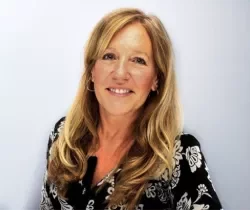Karin Roberts

Karin Roberts is the Director of Marketing for The Tradeshow Network Marketing Group, an exhibit house in Chicago supplying creative island booths, modular and custom rental displays, show services and trade show marketing.

Marketers who browse trade show calendars can be quickly overwhelmed by the array of choices, both in the U.S. and around the world. As a trade show exhibit firm, we hear the same question over and over: What shows are best for my industry? We wish we had an easy answer, but the truth is that you have to do a lot of legwork before you can answer that question accurately.
We recommend a four-step process for determining the best trade show exhibitions for your business.
1. Develop a marketing plan with measurable objectives.
2. Define your best clients and prospects with marketing personas.
3. Evaluate the trade show conventions in your industry.
4. Attend your top-priority shows before committing to be an exhibitor.
Step 1. Develop a marketing plan with measurable business objectives.
What do you want to achieve from participating in a trade show? Do you want to promote greater awareness for your company? Generate qualified leads for your sales force? Launch a new product? The best place to start in determining what trade shows will work for your business is to develop a marketing strategy and tactical plan with realistic results.
According to Andrew Klausner, author of “Creating a Successful Marketing Strategy” on Forbes.com, “The ultimate goal of any marketing strategy is to help you grow your business and increase your brand awareness. In order for a marketing strategy to be successful, it must be multi-faceted, realistic and implemented consistently over time. But the key is to develop a plan, list your objectives and consistently implement them.”
He advises that the marketing plan should:
Step 2. Define your best clients and prospects with marketing personas.
Trade shows appeal to different segments of target markets. The more you can understand your best targets – whether current clients or prospects – the more effective your trade show efforts will be.
The trend in research today is to create buyer personas for your target market. It’s another way of looking at market research. For a buyer persona, you start by evaluating your own customer base to determine your most profitable clients. Working with your sales staff, you can identify several current customers whom you might interview to determine what drives their sales process and decision-making. You should also interview prospects for a different perspective.
According to the Buyer Persona Institute, “Built from the real words of real buyers, a buyer persona tells you what prospective customers are thinking and doing as they weigh their options to address a problem that your company resolves. Much more than a one-dimensional profile of the people you need to influence, or a map of their journey, actionable buyer personas reveal insights about your buyers’ decisions — the specific attitudes, concerns and criteria that drive prospective customers to choose you, your competitor or the status quo.”
Knowing your target market and what drives them will provide important insights into whether the trade shows in your industry match the best prospects for your business.
Step 3. Evaluate the trade show conventions in your industry.
Unless you are entering a new industry, you probably already know one or more trade associations that serve your industry. But in any major industry, the sheer number of trade associations and conferences can be daunting. You need to research the attendee profiles of trade shows in your industry to determine which aligns with your target markets and buyer personas. For example, let’s look at the health care industry. If you sell IT services, software or computers, you might consider an association that specializes in IT. But if your real buyer is a group purchasing manager, you might be better off at a different show.
For the evaluation process, it pays to:
1. Research your competitors. What trade association affiliations do they have? Do they attend any shows? You can find this information on show sites that give lists of their exhibitors and members.
2. List the trade associations in which your company is a member. What is the profile of the entire membership? Do these associations sponsor any shows? Or is there a commercial show that targets your market? If your company is not involved, should you join?
3. Delve into the details. If the trade association does sponsor a show, determine who attends. What are their titles, buying power and potential interest in what you offer? Check out their exhibitor resources online to estimate your all-in costs and see if your competition will be there.
4. Take your buyer personas into account. Based on their profiles, which shows might your best clients and prospects attend?
Step 4. Attend your top-priority shows before committing to be an exhibitor.
Every industry has more shows than any company’s marketing budget can handle. It is important to prioritize the most promising shows. A spreadsheet can be a helpful tool to compare the associations and their shows, including attendee profiles and exhibition costs. If you deal in global markets, you may wish to include trade show stand events, as they are called in Europe and elsewhere.
While a show may look good on paper, the best advice we can give is to walk the show first. All the data in the world will not tell you whether the show is really a good fit for your business until you see the show in person. It may be tempting to skip this step and go straight to exhibiting, but remember that trade shows can represent a significant investment of time and money.

Add new comment